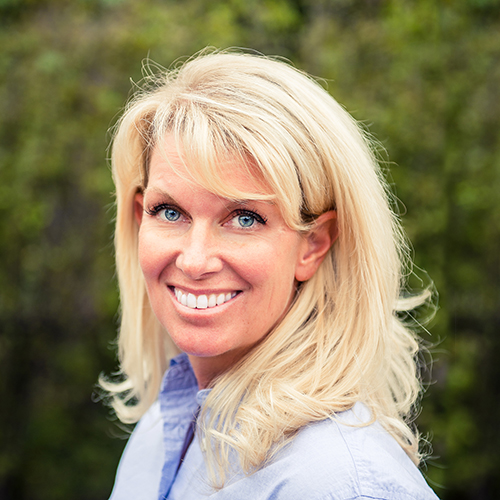In a private equity-backed company where the expectations for results are aggressive and the timeline is short, effective leadership can make or break your investment. That’s why we believe site leadership capabilities are one of the critical areas for operational due diligence. Of course, this often starts with the CEO, and assessing the chief executive’s capabilities as early as possible in the deal process is paramount. But CEOs can’t accomplish everything on their own. They require a top-notch supporting cast. Ideally, you want a CEO, CFO, and COO who are all aligned with the PE firm’s strategic vision, wired to speak the others’ languages, and in-tune with the priorities of their counterparts, ensuring they can work as a team to quickly generate value.
Making sure you have this trifecta—or getting it if you don’t—begins with understanding what it takes for the CFO and COO to thrive, not just in their individual roles, but as part of the team responsible for collectively driving value.
A good portfolio company CFO can see beyond the P&L.
CFOs are numbers guys, as well they should be. It’s their job to ensure the financial growth the PE firm expects to see. But CFOs who are too focused on the P&L and bottom line can almost develop a form of tunnel vision that keeps them from seeing the bigger picture.
We recently worked with a firm to implement some operational improvements with the potential to increase productivity by 20-30%. The CFO was adamant about wanting to see where these improvements would show up on the P&L the next month, for example by reducing hours or cutting a shift. While such actions would have certainly generated an immediate improvement in the bottom line, they were not necessarily in the best interest of the company or the PE firm longer-term. And definitely not ideal for the employees who helped drive the improvements in the first place. With the additional capacity created, the company had opportunities for redeploying employees into more value-generating roles or, better yet, taking on new business without the need to add more people. Such efforts take longer to show up in the bottom line, but they can ultimately lead to better outcomes for an organization looking to grow.
When a CFO can look further out and understand the full potential of operational improvements and productivity gains, he or she is much more capable of working with, instead of against, the COO. And they put themselves in a position to serve as the nucleus of the entire company. “CFOs need to have an intense curiosity and a desire to learn the business from the bottom up,” says Steve Carnevale, a senior financial executive and partner at Rankin McKenzie, LLC, a provider of part-time and interim CFOs and controllers. “Of course, we have a sense of urgency when it comes to the numbers and we want to see changes quickly get to the P&L and drive a better margin, especially in PE-backed firms. But the ability to look at operational improvements within the context of the entire business, and understand how they ultimately impact customers, will help CFOs make better long-term decisions for the business.”
When sizing up your current CFO, you may want to consider if he or she has past experience working in operations or supply chain. If that specific experience is lacking, lean sigma training can be a good proxy. In lieu of either, a wholistic viewpoint is a must. You’ll want to make sure your CFO can think long-term and appreciate the implications financial decisions have for all areas of the business. This mindset will go a long way in positioning your CFO for success in the PE world.
A good portfolio company COO understands the financials and the need for speed.
Just as a great CFO needs to bring his head up from the books from time to time, a good COO needs to, at a minimum, know where the books are kept. Since many operational leaders begin their careers on the front lines, advancing based on their operational and technical expertise, it’s not unusual for a COO to lack the financial background needed to understand a P&L and what operational levers directly impact financial performance. They may have an eye on the bottom line and EBITDA numbers. But in a portfolio company, where all leaders need to work collaboratively to execute the PE firms’ vision, a deeper level of financial insight becomes imperative.
COOs need to understand the business implications of any improvements they make. If, for example, an operational leader is working to reduce set up or changeover times on a line or free up capacity on a piece of equipment, he or she needs to understand how it’s driving top line, bottom line, or cashflow improvements, and be able to have that conversation with the rest of the executive team. The more the COO understands the financials of the business, the more adept he or she will be at identifying operational changes and improvements that have the greatest potential to drive value and deliver ROI.
Speed, too, becomes an issue. While operational improvements can take time to manifest, COOs need an appreciation of the accelerated timeline everyone is operating within in the PE world. In addition to understanding the longer-term implications of productivity and efficiency improvements—such as enabling additional sales—operations leaders must be able to identify and communicate the quick wins, like reducing overtime or eliminating temps. More aggressively looking for the short-term financial gains, while still keeping the bigger picture can help operational leaders get in better sync with the CFO.
However, nothing can take the place of a close COO and CFO working relationship. Klaus Gross, COO at WIKA Instrument Corporation, says he meets with the Controller each month to “understand where the money goes.” These conversations and the feedback from Finance helps him understand which improvement projects impact the bottom line, and which don’t have the desired effect. That insight is key to redirecting resources to the right projects and “pushing the organization on the essentials” as opposed to getting sidetracked by the “nice” projects, which may not pack the same financial punch. Klaus says this two-way sharing between operations and finance is also instrumental in getting his entire team behind a strategic direction. When operational improvement projects and specific activities are defined by their financial impact, it becomes easier for all employees to understand their contribution to the business’ success.
When considering your own COO’s level of financial acumen, a good place to start is to see how well the executive understands which operational improvements act as levers for critical financial performance.
- Does he or she know the organization’s annual sales and P&L goals?
- Can he or she speak to how the operational department’s improvement activities align with those goals?
- How does the COO measure improvements—does he or she look at dollars saved or dollars in additional throughput as metrics of success?
The more fluent a COO is in the financials of the business, the better that executive will fare when it comes to driving the PE firm’s agenda.
When your leaders share your vision and speak each other’s language, your deal value multiplies.
The people in the top roles of a portfolio company have to be on board with the private equity firm’s vision and be able to work collaboratively to drive the investment thesis and move the needle quickly. Taking the time during due diligence to see if your CFO and COO have the individual capabilities as well as the ability to see eye to eye and understand each other’s perspectives can ensure your team is ready to hit the ground running. And it can keep the business on pace to achieve its growth goals throughout the holding period.






